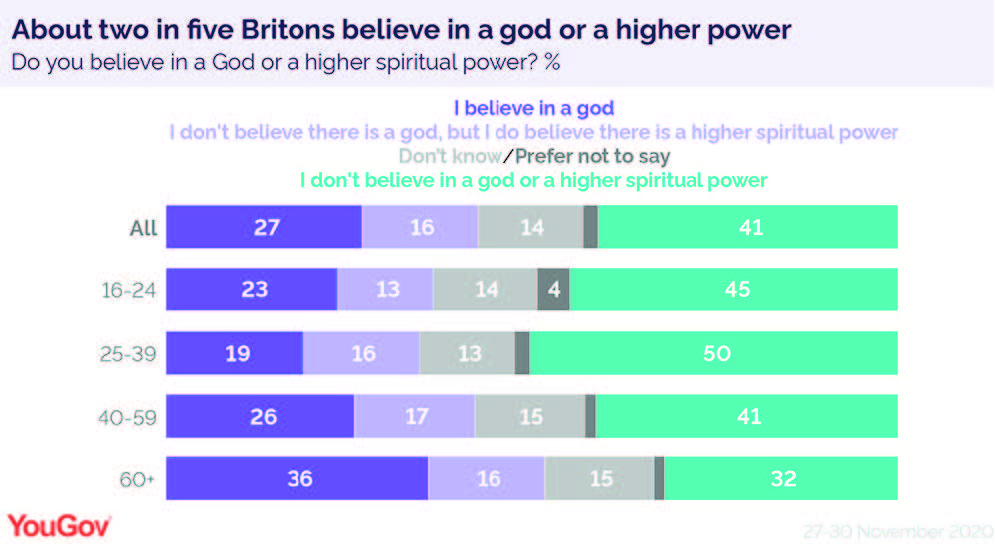
![]()
While religious attendance is negatively associated with women’s egalitarian attitudes toward gender, this relationship depends on a country’s rate of gender inequality and religious affiliation, according to an analysis of survey data from 37 countries. The study, published in the Journal for the Scientific Study of Religion (online in January), is based on a survey of gender roles by the International Social Survey Program that measured women’s religiosity and attitudes on gender. Conducted by Santa Clara University sociologist Di Di, the study looked at how national religious context shaped the interaction between religiosity and gender attitudes. In both India and the Netherlands, religious women perceive gender norms to be different outside of their faith and construct boundaries that differentiate themselves from the “secular other.” Thus in the Netherlands, religious women construct more traditional gender roles and attitudes than those prevalent in their secular environment, while in India, women who more frequently attend religious services have more egalitarian gender ideas compared to the traditional gender norms prevalent in the wider society.
(Journal for the Scientific Study of Religion, https://onlinelibrary.wiley.com/journal/14685906)

Source: Noelia Demaria, via Pixabay (https://pixabay.com/de/users/noeliademaria-3275898/)
![]()
While the number of missionaries being sent from countries in the global South continues to rise, those countries with the largest share of Christians still tend to receive the most missionaries, according to an annual review of world Christianity in the International Bulletin of Mission Research (January). Authors Gina Zurlo, Todd M. Johnson, and Peter F. Crossing note that their projected figures for 2021 do not take into account the changes wrought by Covid-19, adding that demographers will not know the effects of the pandemic for years. But their projections for 2021and beyond suggest that the center of global Christian influence, including missions, continues to shift to the global South. More specifically, they find that the number of missionaries being sent from countries in the global South continues to rise, with 203,000 (43 percent of the total) in 2021, increasing from 31,000 (12 percent) in 1970. While North America and Europe, due to their greater wealth and resources, continue to send the most cross-cultural missionaries (53 percent), Brazil, South Korea, the Philippines, and China each send large numbers as well. The researchers add that “a striking reality for the global missions movement is that the countries with the most Christians receive the largest number of missionaries…An increasing number of Protestants and Independents are being sent to Africa and Asia as well as being sent from there.” They note that there are still 4,000 cultures (out of 14,000) that have not encountered Christianity, most of which are Muslim, Hindu, and Buddhist in the global South.
(International Bulletin of Mission Research, https://journals.sagepub.com/home/ibm)

Source: Royal Mayhem, CC BY-SA 4.0 <https://creativecommons.org/licenses/by-sa/4.0>, via Wikimedia Commons.
![]()
A new poll of Britain’s Generation Z finds that both older and younger teens are more likely to believe in God than are millennials, the demographic group ahead of them. The survey, conducted by YouGov in late November and reported by The Times (December 28), found that 23 percent of Britons aged 16 to 24 said they believe in God, with an additional 13 percent saying they believe in a “higher spiritual power.” In contrast, only 19 percent of those aged 25 to 39 said they believe in God, with 16 percent saying they believe in a higher power. Both groups score lower than the wider British population in its belief in God (27 percent). The proportion of Gen Z members who say they believe in God is up from 21 percent in January 2019 (when the question was asked of 18 to 24-year-olds), suggesting that some may have embraced religious belief over the course of the pandemic. The pollsters add that it is not clear if these figures hint at a significant shift toward religious expression for this age group. However, the newsletter Counting Religion in Britain (December) views these findings with some skepticism, arguing that “too much significance should not be read into a variation from one data point to the next among a subsample numbering just a few hundred, especially when the age bands were not consistent. More noteworthy, perhaps, is the continued overall slide in the proportion believing in some kind of life force at all, down from 58 percent in 2012 (and 49 percent on the eve of the Covid-19 pandemic) to 43 percent today, a further indication that coronavirus is not turning the nation to religion.”
(Counting Religion in Britain, http://www.brin.ac.uk/counting-religion-in-britaindecember-2020)
